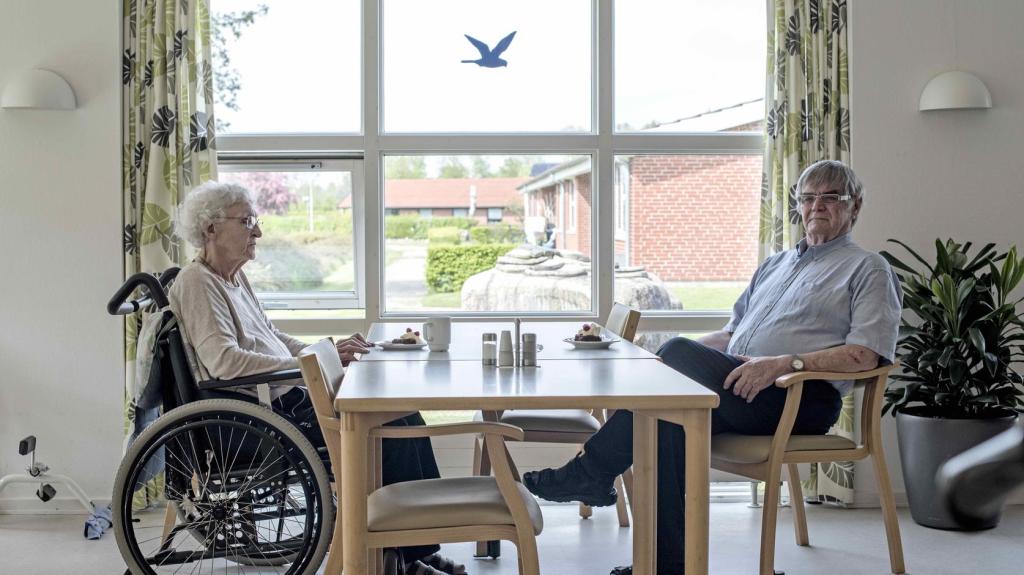This article originally appeared on MUNCHIES Denmark.
Ella Hansen puts down her fork and looks at the chocolate brownie on the plate in front of her. She smiles. “Yes, it’s really good,” says the 89-year-old, with a twinkle in her eye. “We’re doing very well here.”
No kidding. Hansen lives at Hvalsø Ældrecenter—a nursing home located in the Danish city of Lejre, which is approximately 12 miles outside Roskilde—and the brownie is made with chocolate from Mikkel Friis-Holm, whose client base includes renowned chefs with Michelin stars and chocolatiers around the world.
Videos by VICE
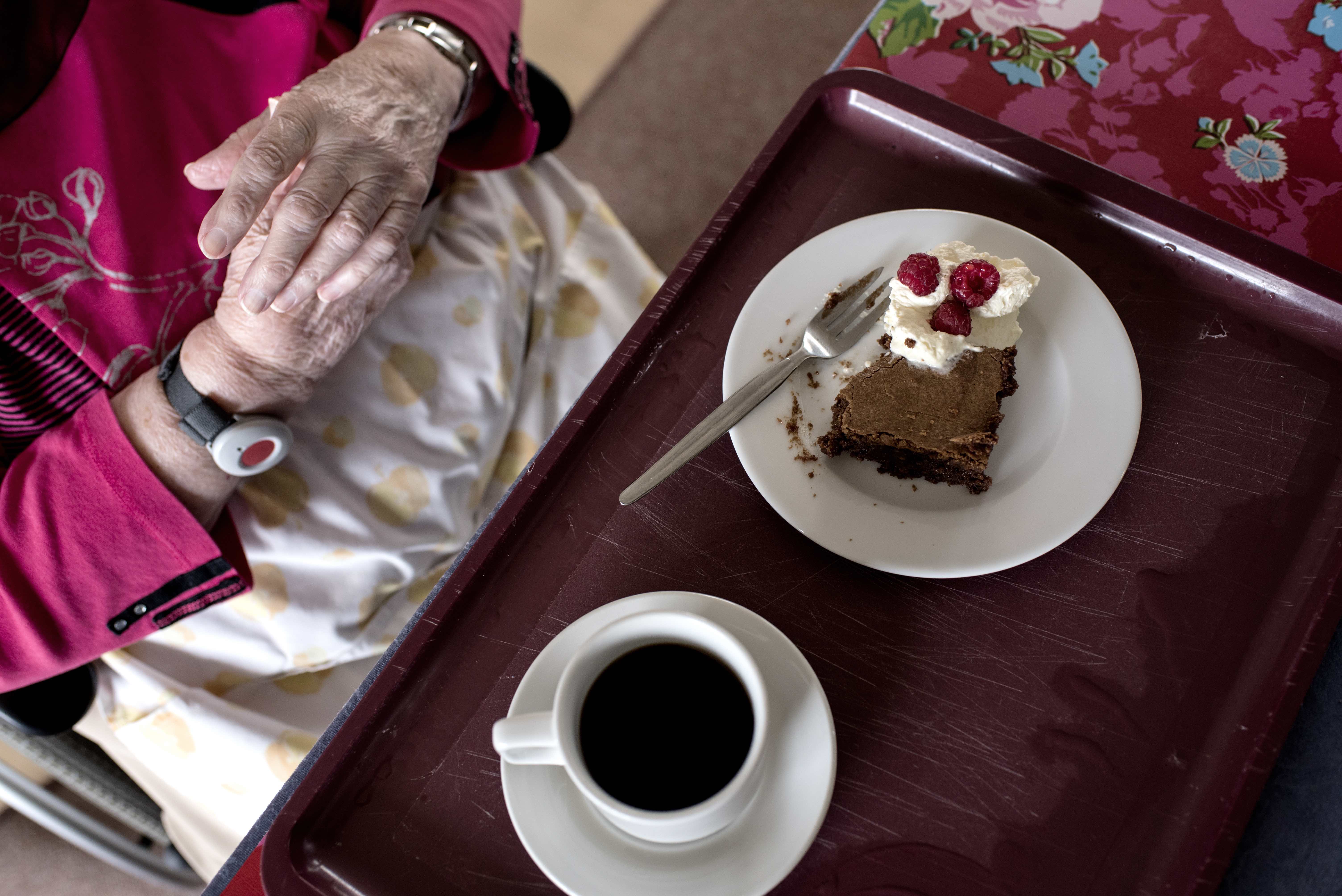
Chocolate brownies are served at Hvalsø Ældrecenter.
The 47-year-old chocolate maker has rented out an industrial kitchen inside the nursing home ever since he started his company back in 2014. So it makes sense that his chocolates sometimes end up on the dessert cart.
In fact, Friis-Holm makes sure that the nursing home’s kitchen regularly receives a good supply of chocolate. “To me, it’s like a barter system—sorry for bothering you again and again,” he says. “I’m often asked whether [the residents] get lots of chocolate, and I can answer in good conscience that yes, we do give them chocolate.”
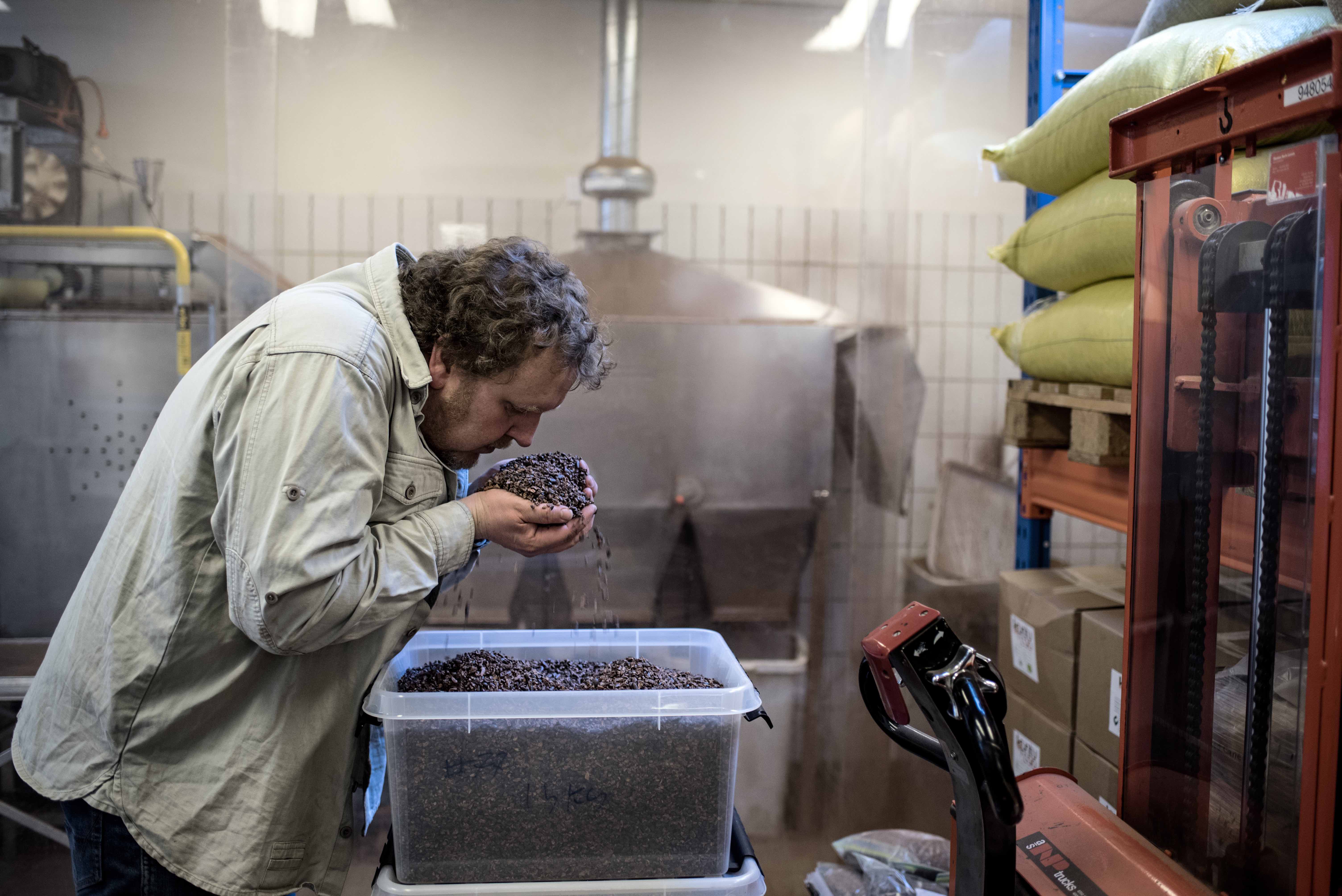
Mikkel Friis-Holm inspects his cocoa beans.
But what do residents of the nursing home think about all that fine chocolate? In the cafeteria, we met the 71-year-old retired naval architect, Thomas Michelsen, who said that the brownie was “a little much, but good.” Hansen agreed that the brownie had a powerful flavor, which isn’t surprising considering it’s made with 70 percent dark chocolate. Hansen later admitted that, for many years, she worked for Tom’s, Denmark’s largest chocolate manufacturer, so her opinion may have been slightly biased.

Regardless, there’s not much that reveals the presence of the award-winning chocolate that’s being made at Hvalsø Ældrecenter. Cabbage—not cocoa—is the dominant aroma when you arrive at the single-story compound surrounded by greenery. There are no signs to point visitors in the direction of the chocolate factory. The kitchen is so discreet that apparently some of the home’s residents didn’t even realize it was there at all.
“It’s hard to believe it’s here,” Hansen says, wonderfully unimpressed.
But the photographer and I found the factory. It’s a 1900-square foot room, filled with boxes, buckets, and antique technology from Switzerland and Scotland—big machines with names that sound like wrestlers (“The Macintyre,” or “The Seashell,” for example). The air is sweet, and I couldn’t help but think of Charlie and the Chocolate Factory.
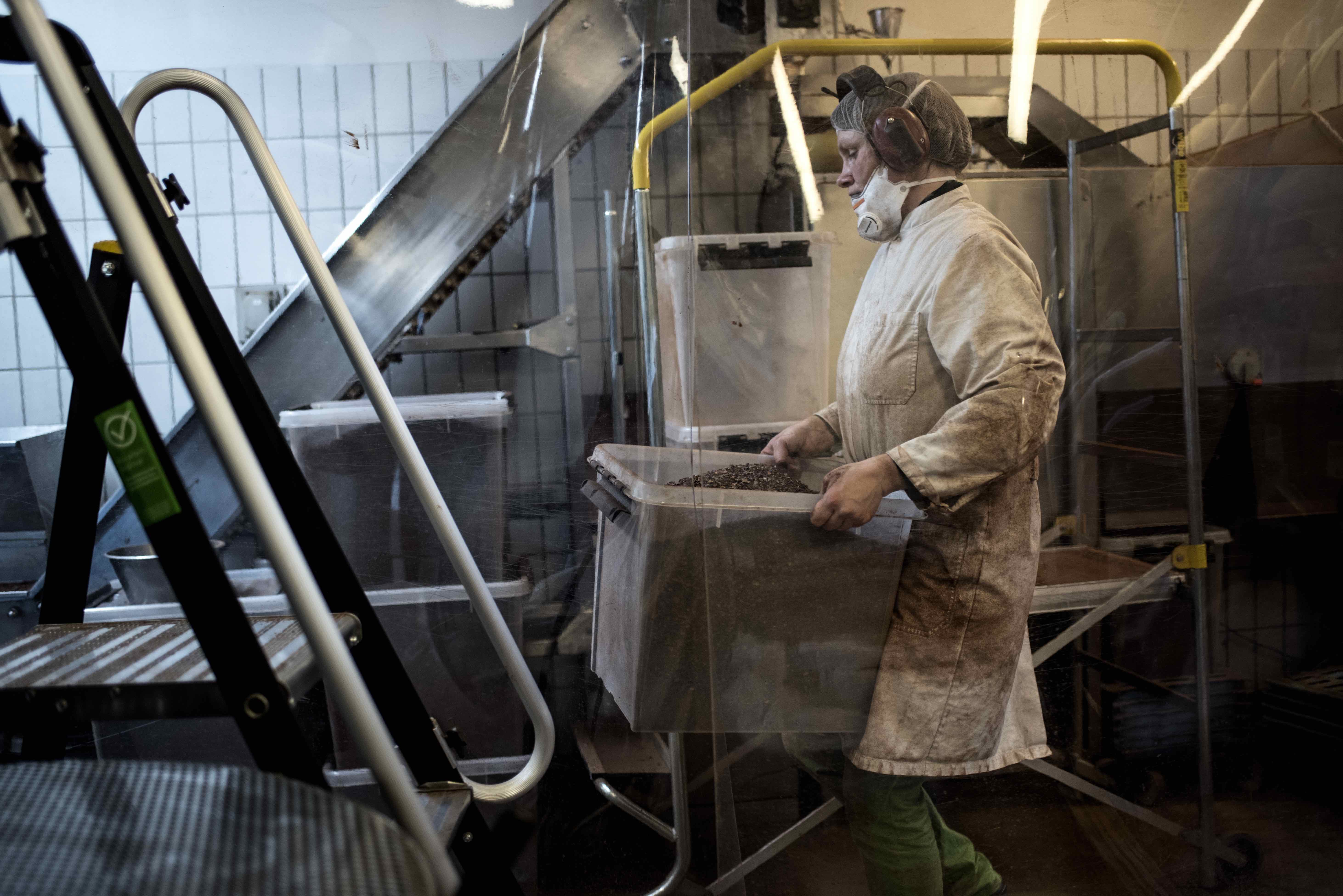
“Yes, it’s like Willy Wonka with all the machines making strange things and hushing and buzzing, but it’s actually quite real,” Friis-Holm says. As if on cue, his ex-wife (and employee) Anna enters, dressed like a steampunk Oompa-Loompa, with glasses, ear protectors, and overalls covered in a fine layer of chocolate powder.
Friis-Holm notices my surprise and gives me some background. He’s a former chef and baker, and worked with the French chocolatier Bonnat for many years before he left the company in 2014. He wanted to produce chocolate near the nursing home in Lejre and tried to get help from the municipality. They recommended that he take over Hvalsø Ældrecenter’s production kitchen, which had previously cooked for all the nursing homes within a 10-mile radius, but had fallen into disuse once the the catering effort was centralized and moved to Copenhagen.
“The municipality gave us a good deal, and it was the perfect way to get started,” Friis-Holm explains. “It was affordable, and the premises were ready and covered with tiles. The nursing home’s management is very modern. Ten years ago they might have said, ‘Although the building is empty, you can’t use it.’ Instead, they thought, ‘Here we have an opportunity to help a local guy start his business, so why not [let him] use the facility?’ They lose no money—I pay rent—and the facilities were here already and ready to use. So instead of [just closing it], now it’s being used for something that’s created jobs in the local area.”
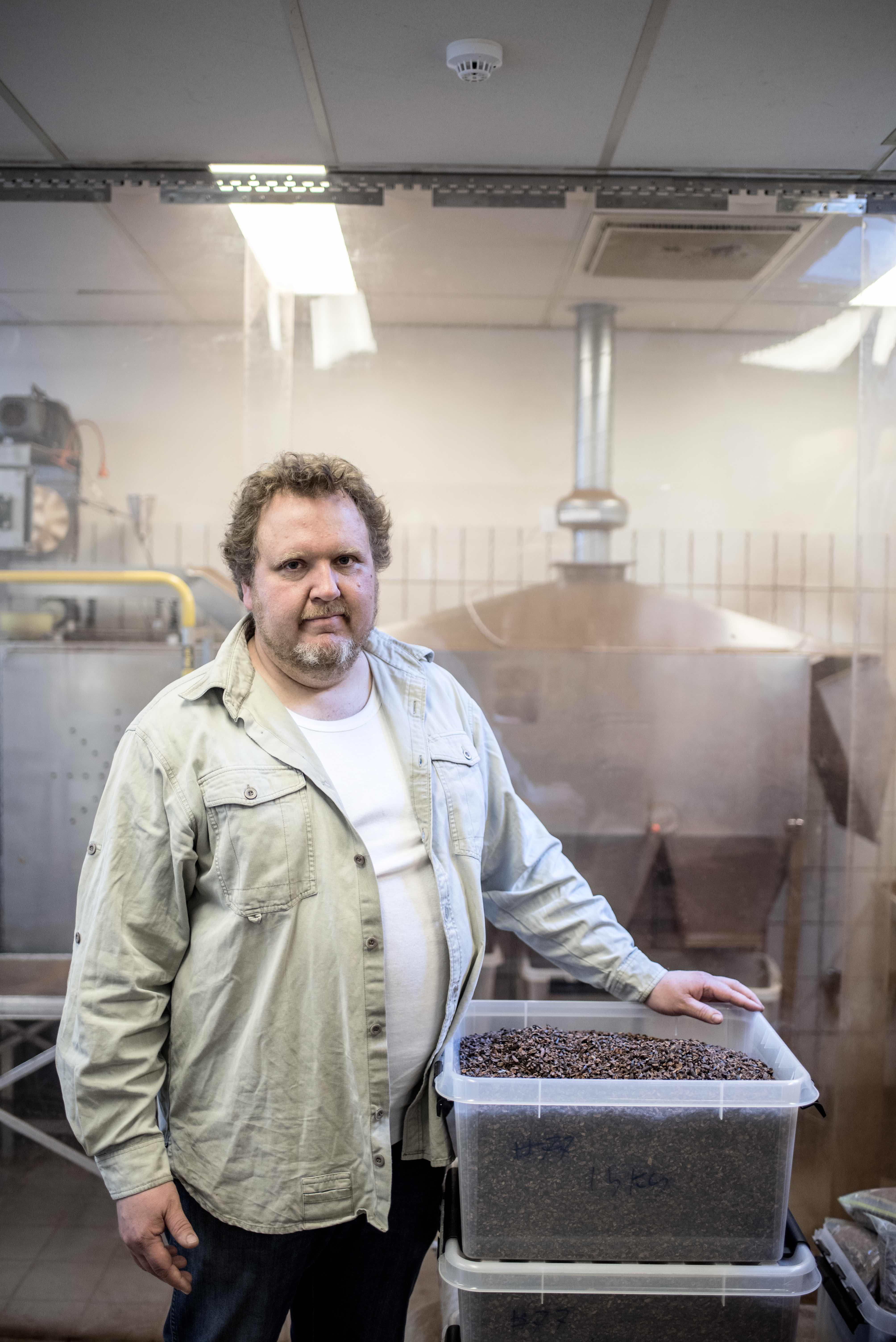
Mikkel Friis-Holm.
Unsurprisingly, there are a few nuances to operating a chocolate factory inside a nursing home. Among other things, the electric meter is shared. Some of the residents who are aware of the factory’s presence sometimes come looking for a few goodies on their respective birthdays—after all, there’s plenty available.
Friis-Holm has six employees, and last year he imported 22,000 pounds of cocoa from Central America, most of which came from Nicaragua. It corresponds to roughly 100,000 chocolate bars. Friis-Holm expects these numbers will increase both this year and in 2018. He also expects the company to eventually leave Hvalsø Ældrecenter. “We’ve become too big,” he says.
The company garnered praise quite quickly after it launched; for proof, look no further than the framed certificates decorating the walls. Friis-Holm won a whopping seven awards at last year’s International Chocolate Awards—the cocoa equivalent of the Oscars, which includes the award for the world’s best organic dark chocolate. Their customer directory includes some of the world’s best chocolatiers, such as Patrick Roger in Paris and Susumu Koyama in Japan, and noteworthy Danish restaurants like Henne Kirkeby Kro, Relæ, Geist, and Alchemist.
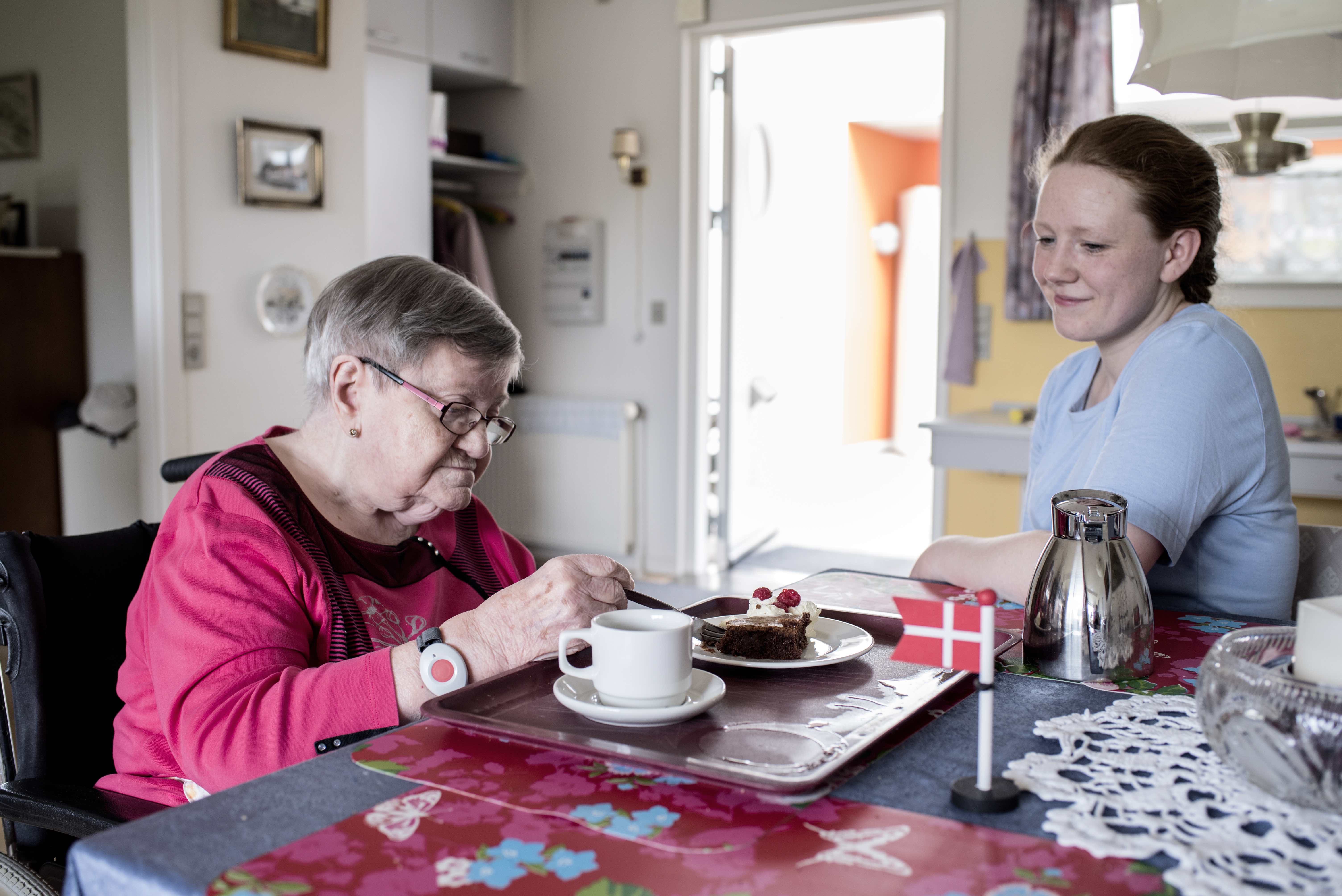
Ella Hansen and health care assistant, Jeanette Rosenberg.
Oh, and a nursing home on Zealand, of course. The 90-year-old Hansen, who has lived at the nursing home for the last 14 years, puts the latest issue of her magazine down on the table to take a bite of a brownie.
“It tastes good,” she says, perhaps a tad diplomatically. Doesn’t she think it’s a bit strange, that there’s a chocolate factory further down the hallway? “No, it’s perfectly fine,” she says. “It’s nobody’s beeswax. It doesn’t concern me.”
I push her once more to give her final verdict on the brownie. “It tastes a little too much of chocolate,” she admits. “When it has so much flavor, it feels more intense, and then you don’t eat very much.”
So it’s not dangerous that the residents are overeating Friis-Holm’s chocolate?
“The fact is, there’s less sugar in chocolate with [cocoa] percentages on the higher end of the scale, so the cake here is actually healthier than other cakes,” Friis-Holm explains. “They’re probably getting more chocolate cake here than elsewhere. But we’ve gotta be good neighbors. That’s the most important thing, because we’re literally under the same roof.”
